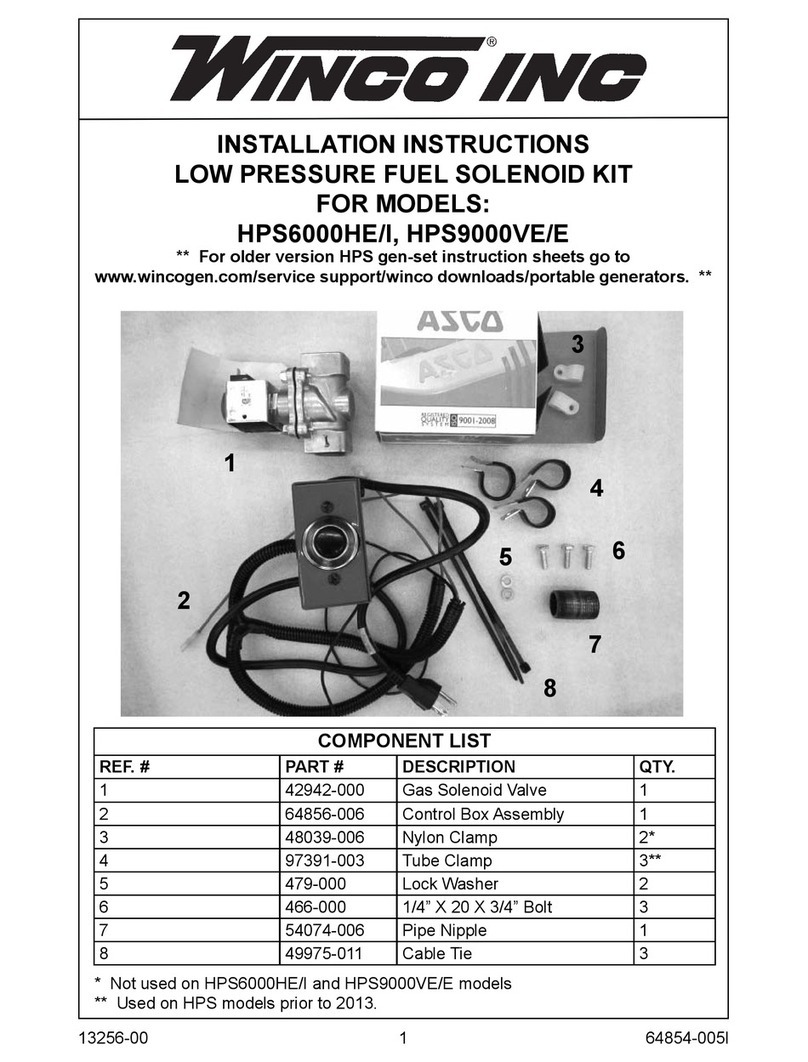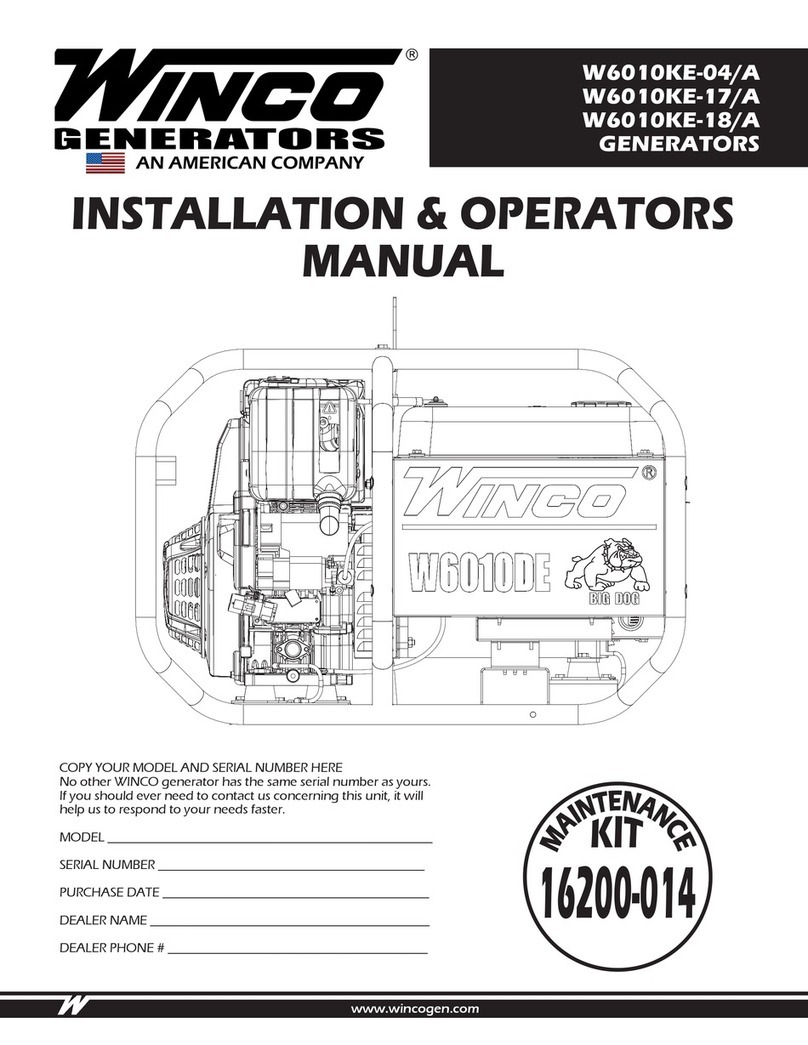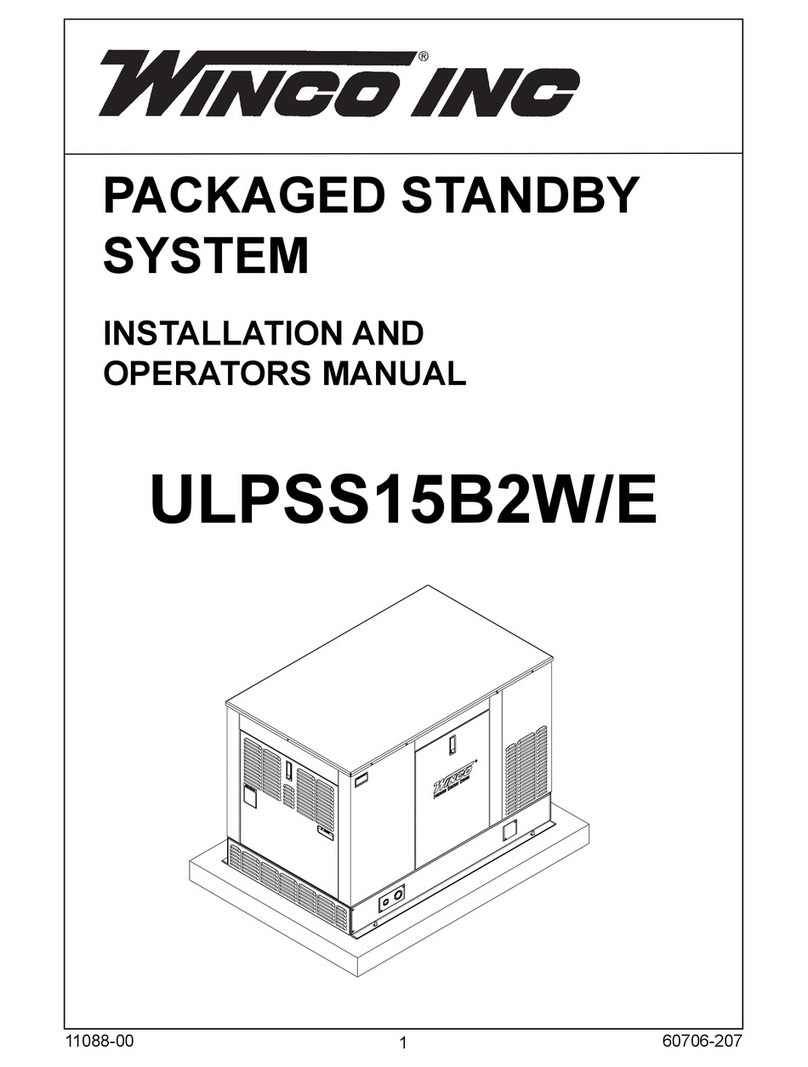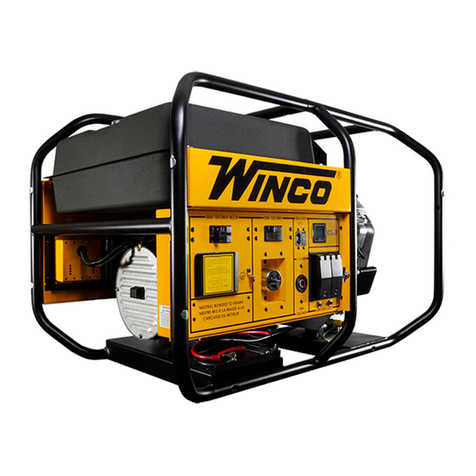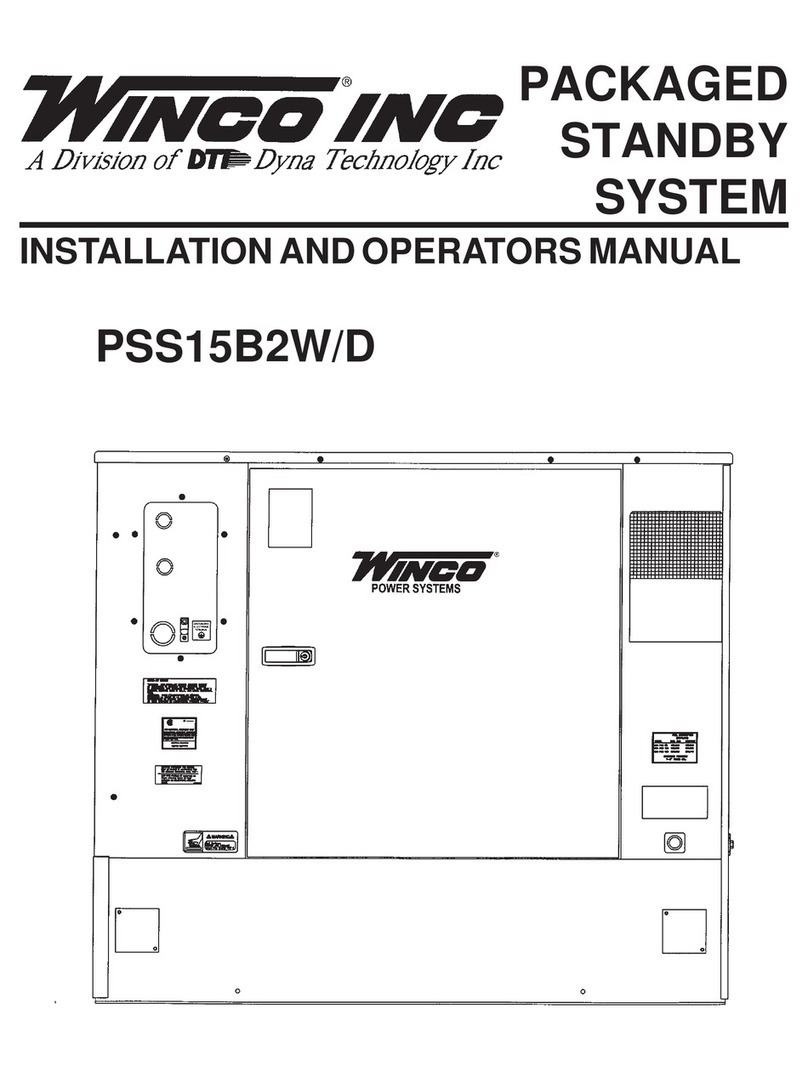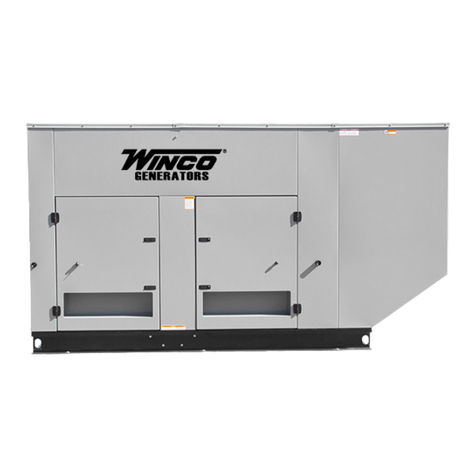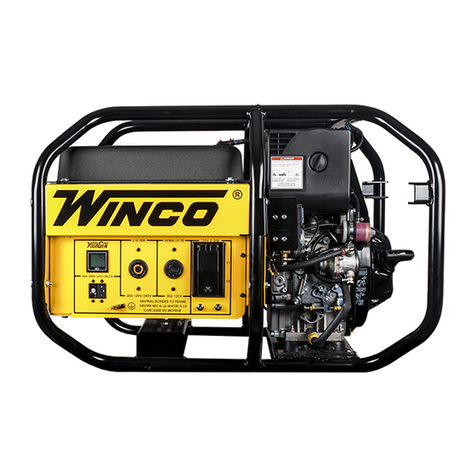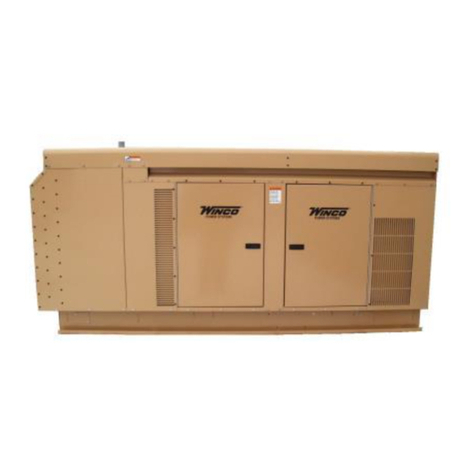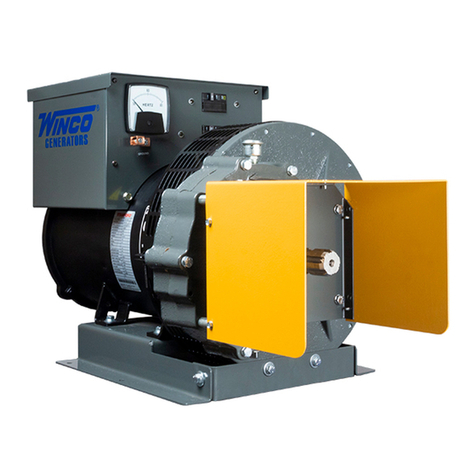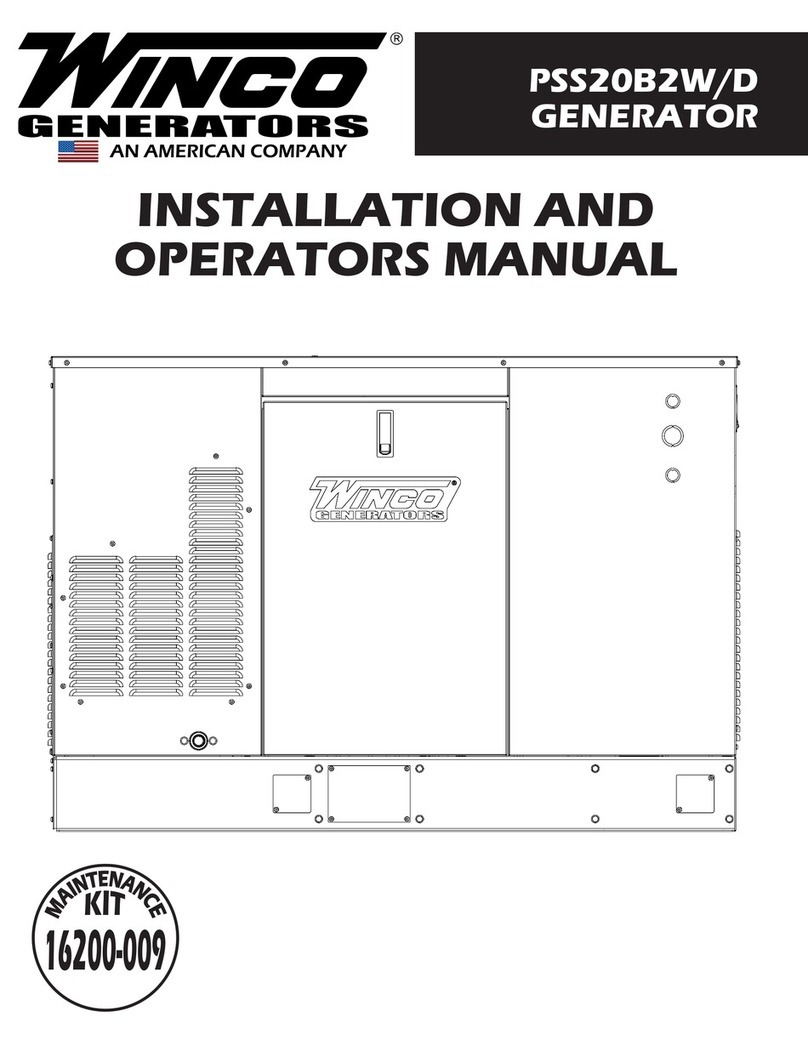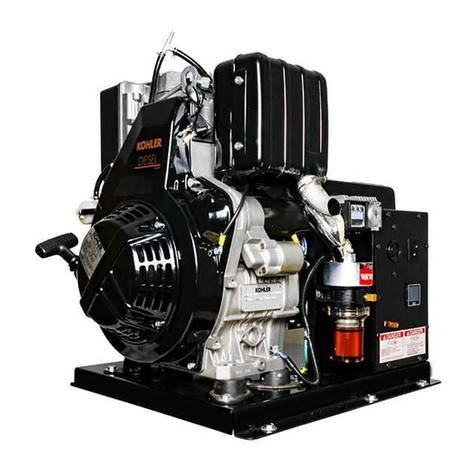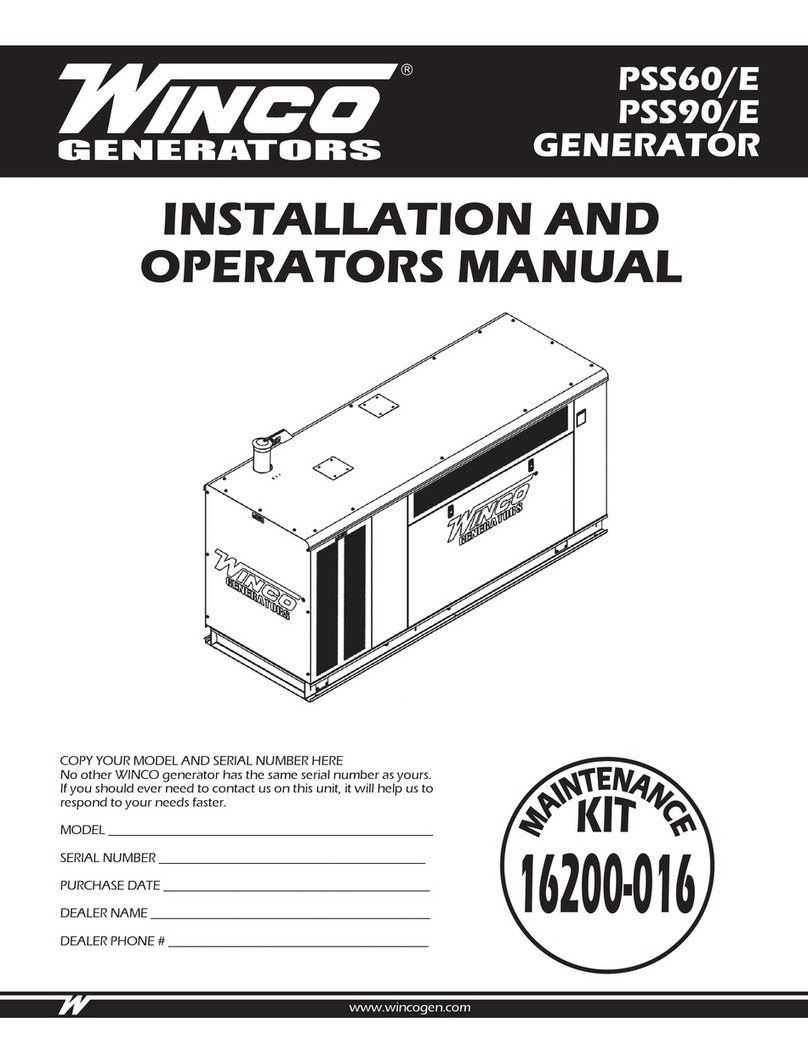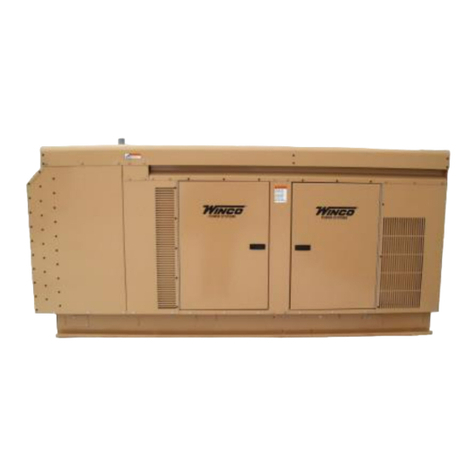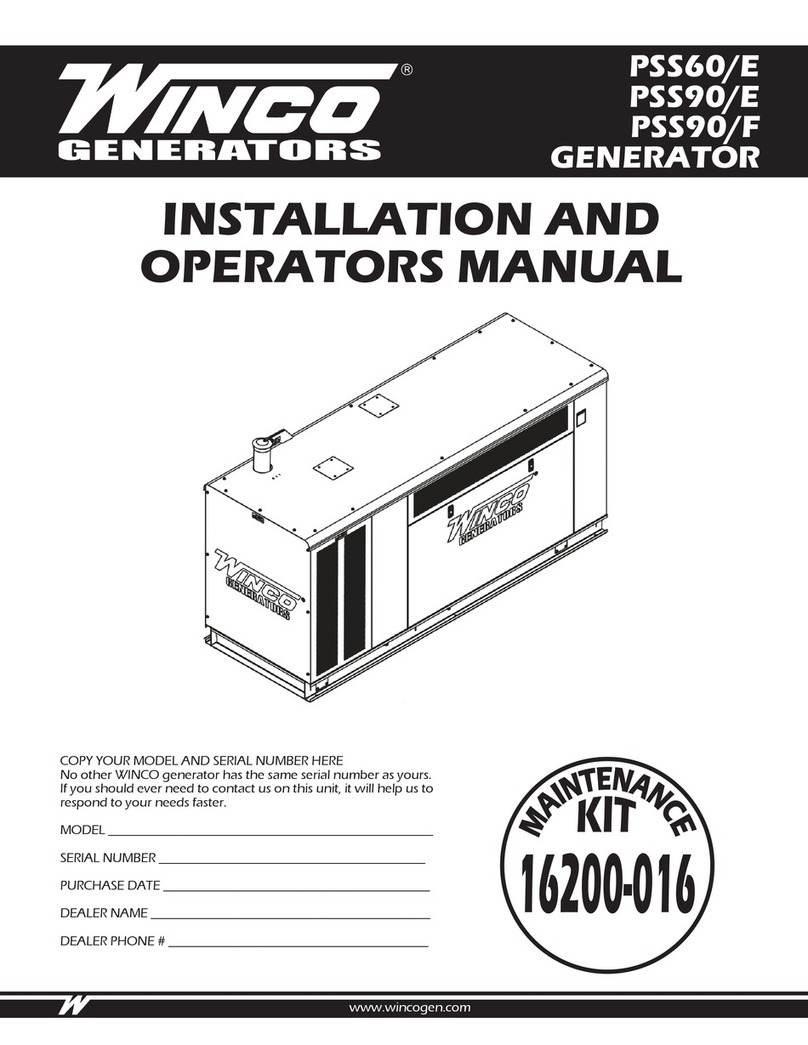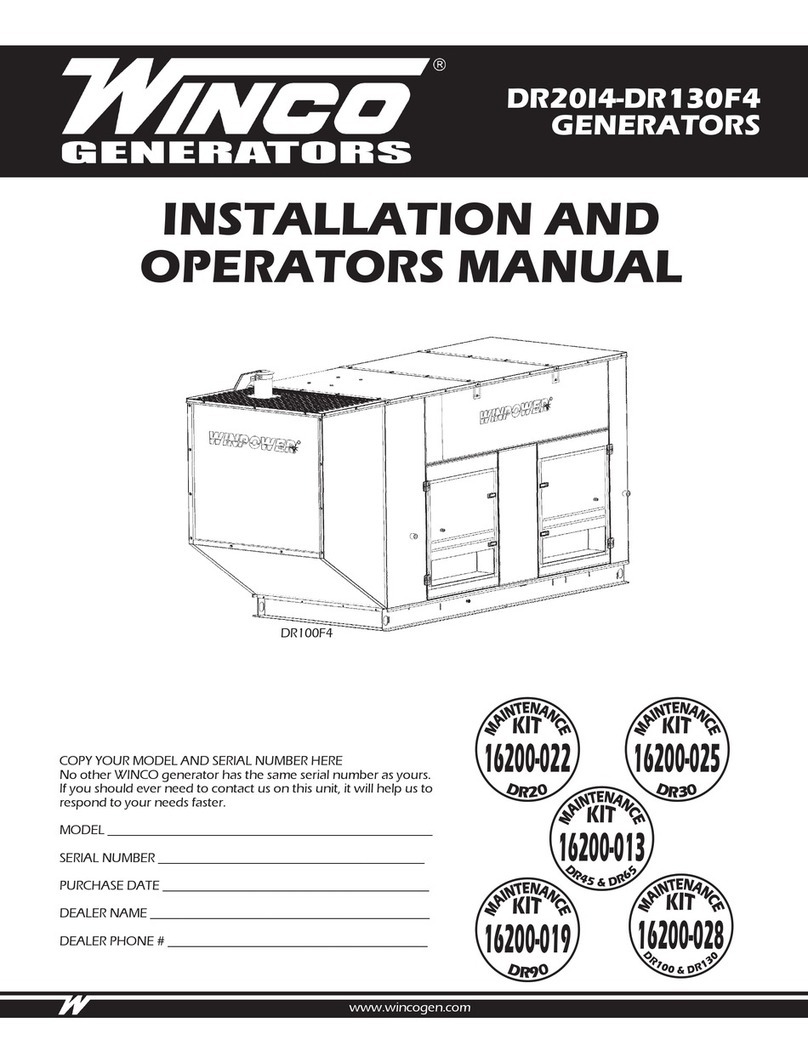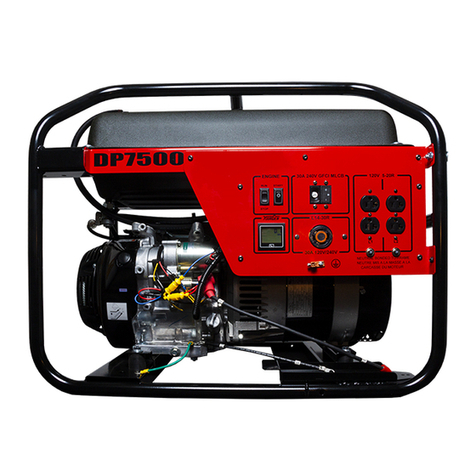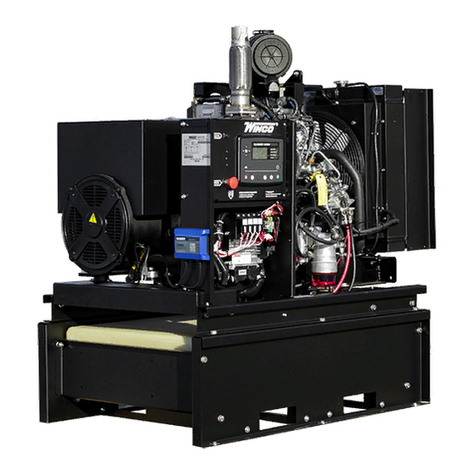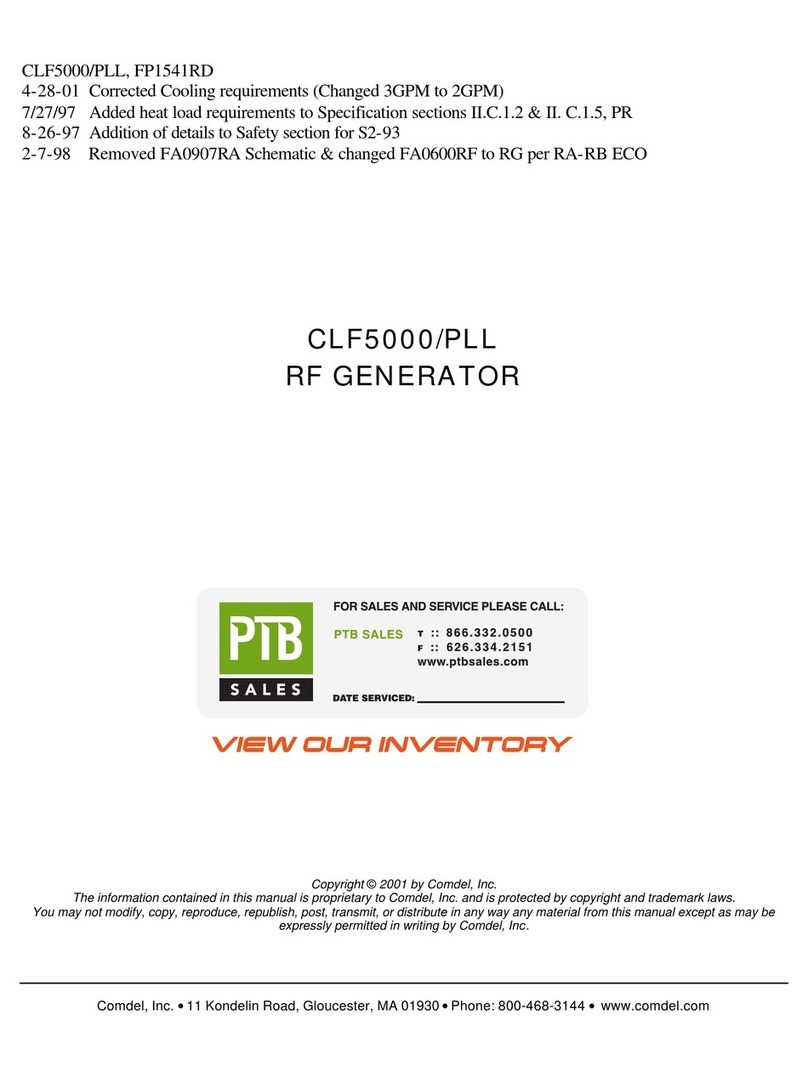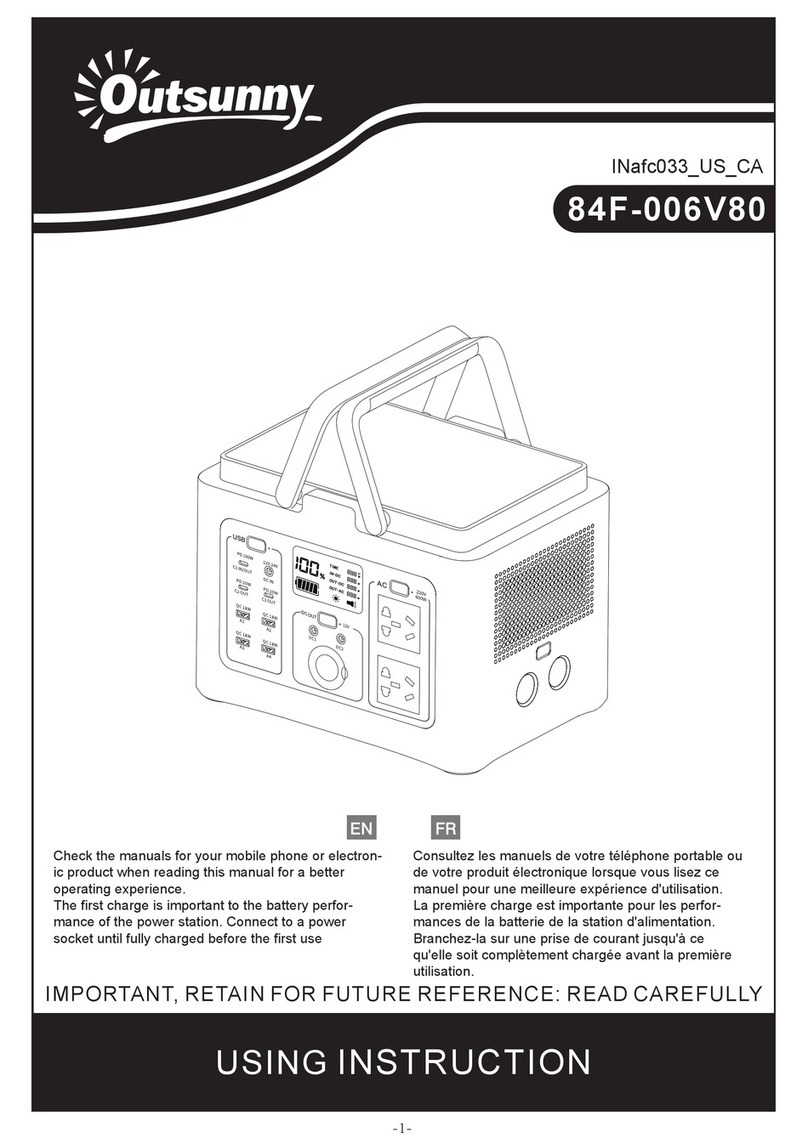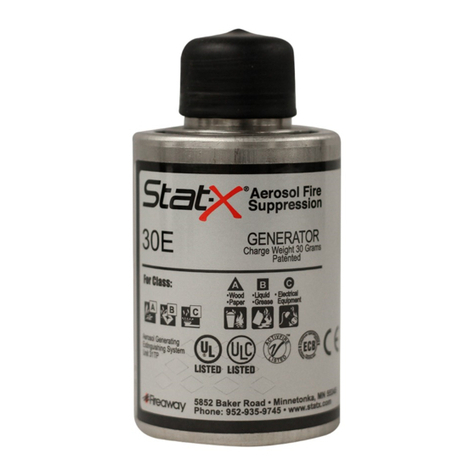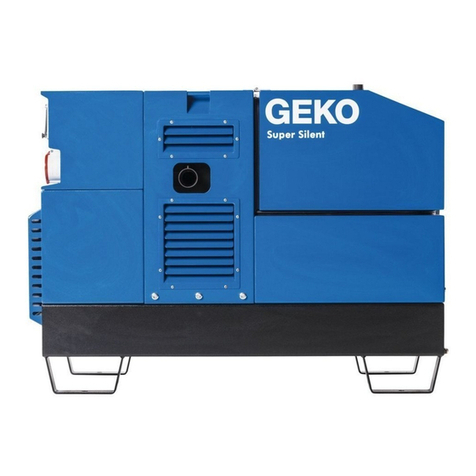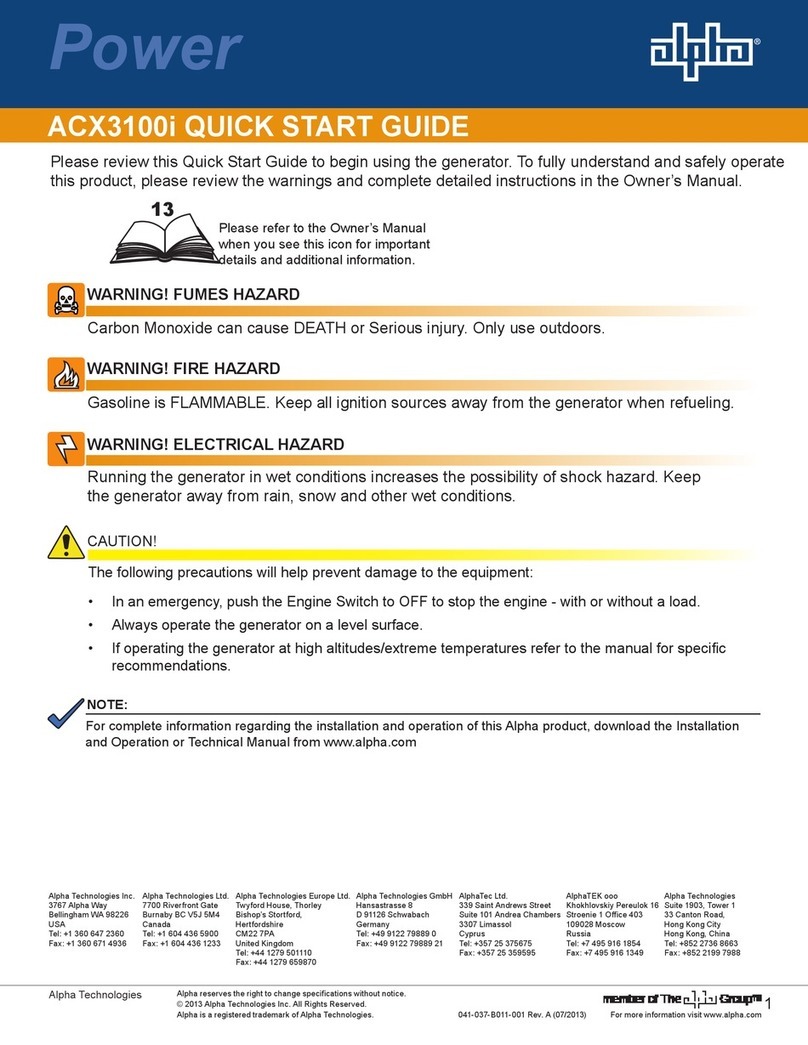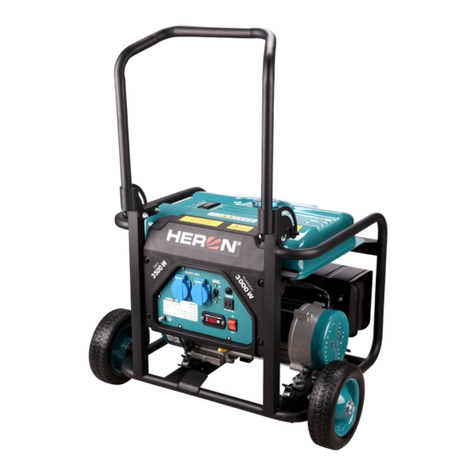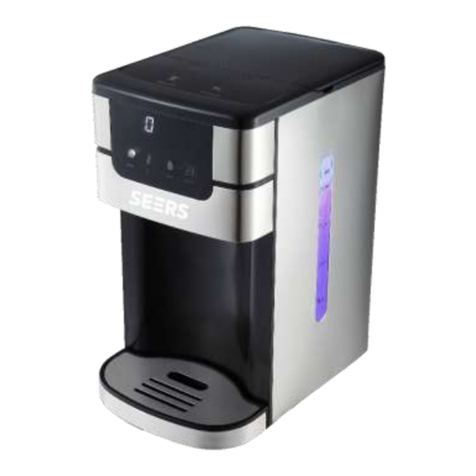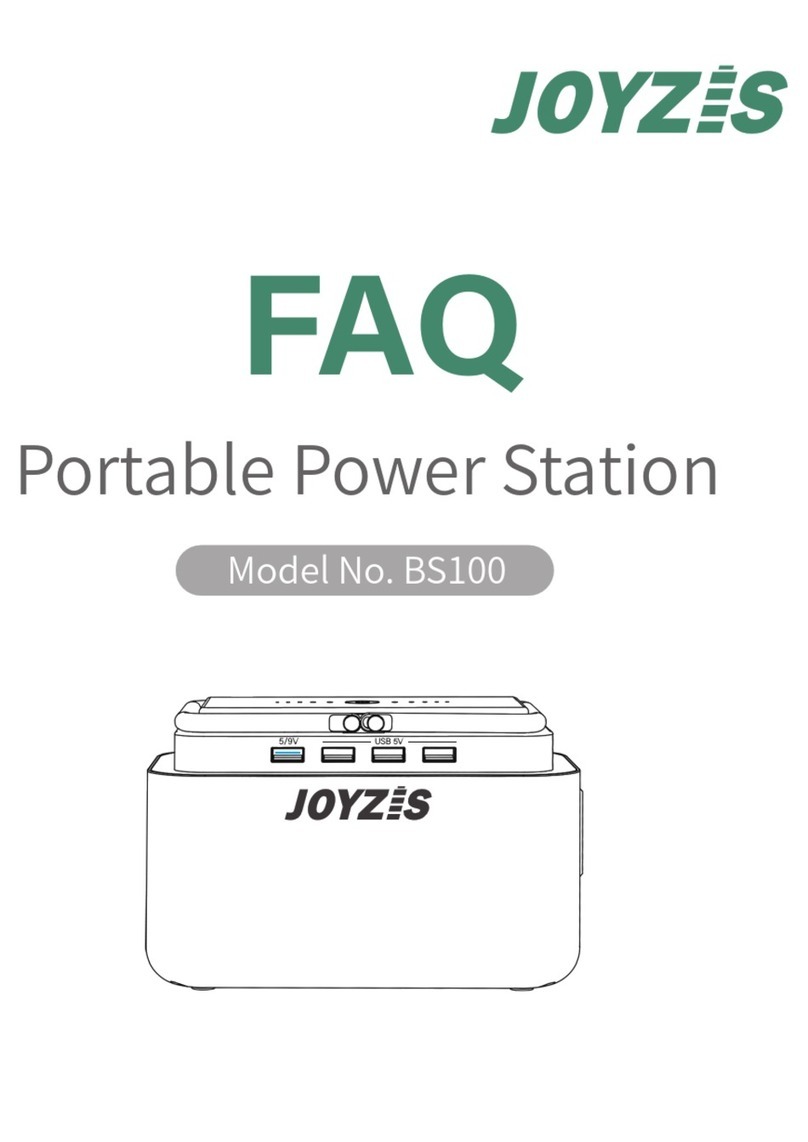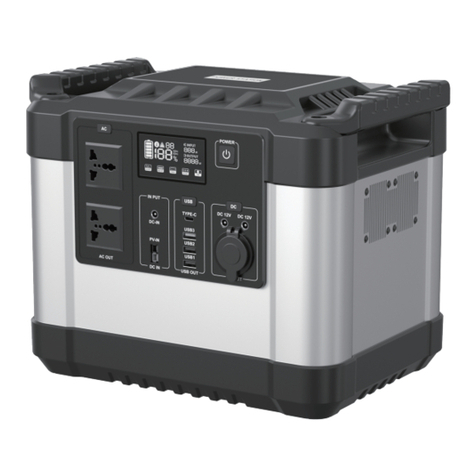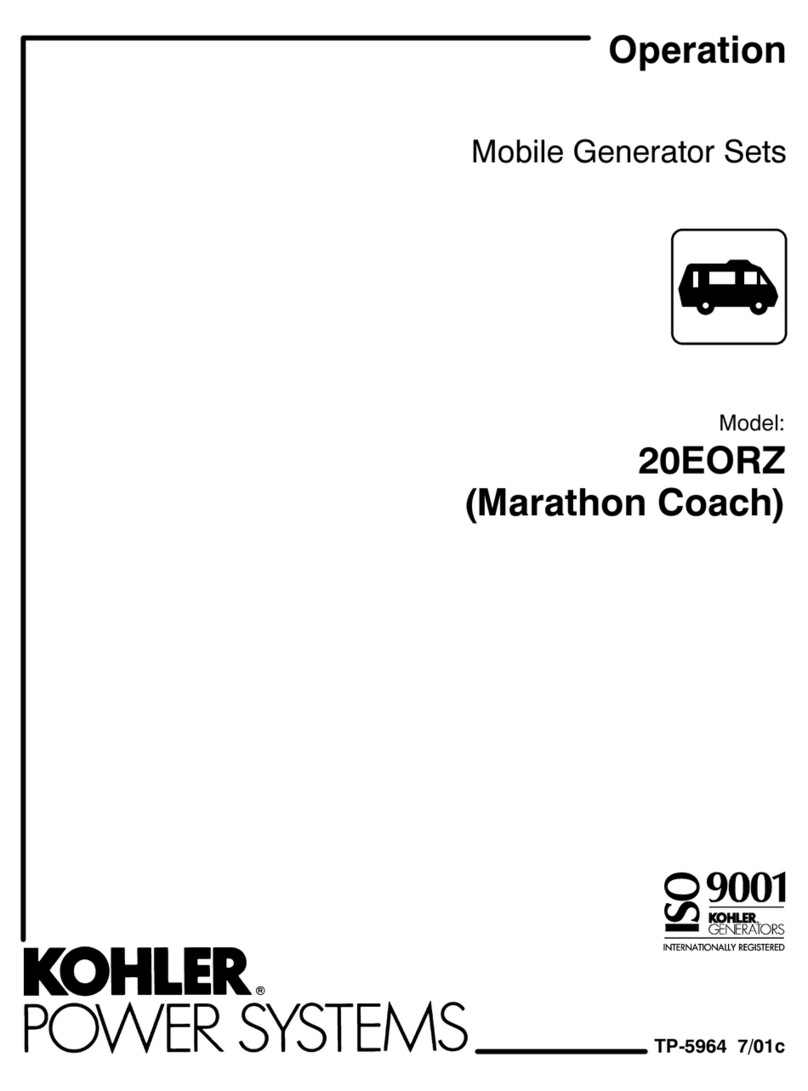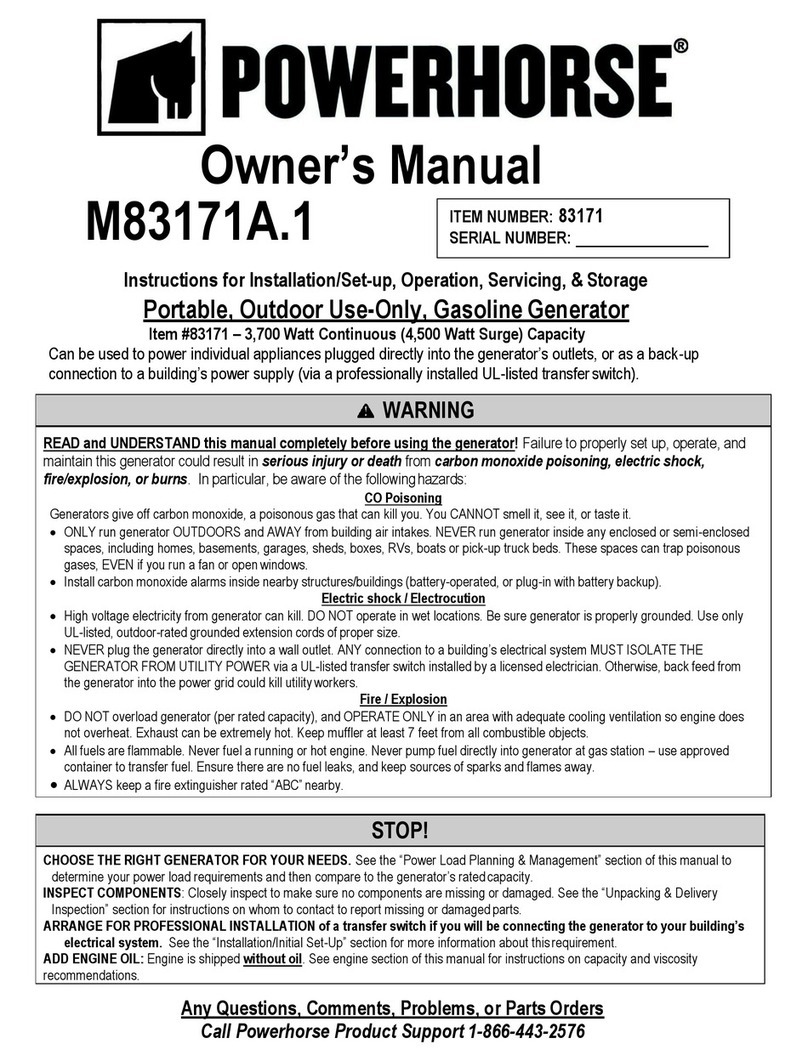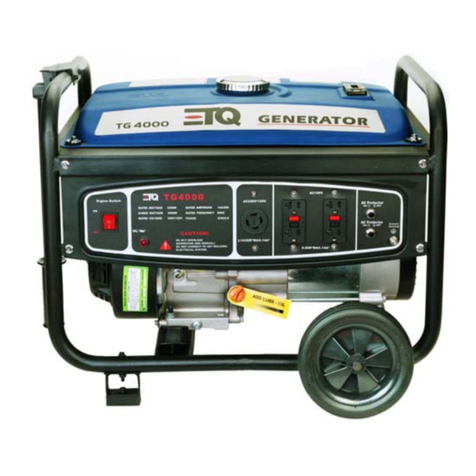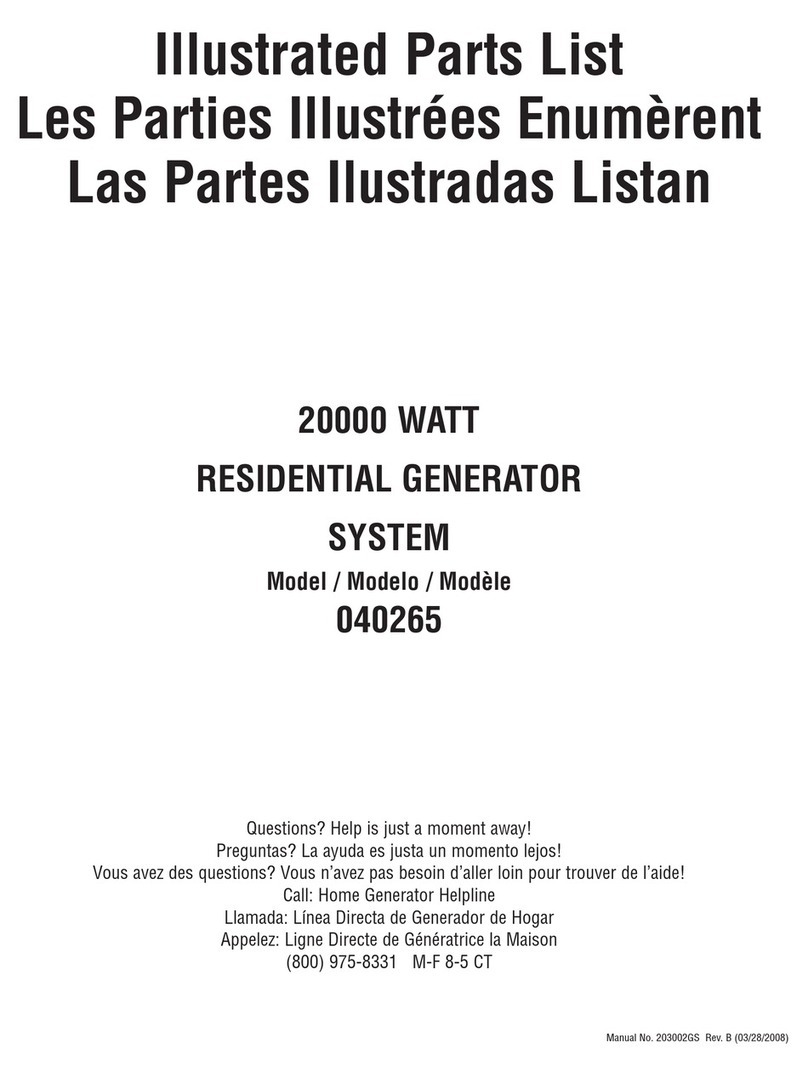
4REV B
OPM-101
PREPARING THE UNIT
UNPACKING
CAUTION: EQUIPMENT DAMAGE
When you unpack your new generator, be sure to remove all of the
information sheets and manual from the carton.
1. As you receive your unit, it is critical to check it for any damage. If
any damage is noted, it is always easiest to refuse the shipment and
let WINCO take care of the freight claim. If you sign for the unit, the
transferoftheownershiprequiresthatyoulethefreightclaim
2. Before proceeding with the preparations of your new generator
for operation, take a couple of minutes to ensure the unit you have
receivedisthecorrectmodelandreviewthespecicationpagesinthis
manual to ensure that this unit meets your job requirements.
UNIT INSTALLATION
Plans for installation should be prepared with proper attention to
mechanical and electrical engineering detail to assure a satisfactory
system installation. The information in this manual is offered as a
guidetonalizingyourinstallationplans.Theinstallationsequenceis
summarized below.
HP AMPS
RUNNING
STARTING
AMPS
SP CAP RI
1/6 3.2 16 TO 22 6 TO 13 5 TO 8
1/4 4.5 22 TO 32 9 TO 8 7 TO 12
1/3 5.2 26 TO 35 10 TO 21 8 TO 17
1/2 7.2 NOT MADE 14 TO 29 11 TO 18
1 13.0 NOT MADE 26 TO 52 20 TO 33
Theguresgivenaboveareforaverageloadsuchasablowerorfan.
If the electric motor is connected to a hard starting load such as an air
compressor, it will require more starting current. If it is connected to a
light load, or no load such as a power saw, it will require less starting
current. The exact requirement will also vary with the brand or design
of the motor.
Self- exciting generators respond to severe overloading differently
that utility power. When over loaded, the engine is not able to supply
enough power to bring electric motor up to operating speed. The
generator responds with high initial starting current, but the engine
speed drops sharply. The overload may stall the engine. If allowed to
operate at very low speeds, the electric motor starting winding will burn
out in a short time. The generator winding may also be damaged.
PLAN THE INSTALLATION
Generally, two-bearing generators are used on portable equipment. For
best service consider the following:
1. All electrical equipment should be protected from excessive moisture.
Failure to do so will result in deterioration of the insulation, short
circuits, and grounds.
2. The generator should be installed in a sheltered area. If the unit must
be left in the open, it should always be protected with a weather cover
such as a tarp or large piece of canvas after each use to keep out water
and dust.
CAUTION: EQUIPMENT DAMAGE
Always allow the generator and prime mover to cool before covering
with a ammable weather covering.
MOUNTING
CAUTION: EQUIPMENT DAMAGE
The generator must be mounted with the engine to a common rigid
base to prevent stress on the engine and generator shafts and bearings
do to vibration displacement. For permanent installations, the engine-
generator is usually mounted on a sub-frame which can be shock
mounted with neoprene pads on the main frame.
Before proceeding with installation, be sure that you have completely
read and understood the assembly and installation instructions.
Anenginewithadequatehorsepowerandacloseregulated(xed
speed) governor is required for satisfactory operation of this generator.
About 1.4 horsepower is required to produce 1,000 Watts of generator
outputpowerassuming100%efciencyofboththeengineandthe
generator.However,duetoengineandgeneratorefcienciesof80
to 90%, the loss of power due to engine driving accessories such
as cooling fans, battery charging alternators, etc. friction losses and
slippage in the drive pulleys and belts, the general conservative rule of
thumb allowing approximately two (2) horsepower for every 1,000 Watts
of generator output is much more realistic. For example, the 2,400 Watt
generator output will require a 4.8 horsepower engine for full output,
good speed/voltage regulation, and satisfactory load performance.
When determining the prime mover/generator pulley ratio to drive the
generator at the correct operating speed, bear in mind the power rating
of most prime movers (usually an engine) varies with speed. It produces
more power at higher speeds, less when slowed. The prime mover
must be fast enough to reach desired horsepower for good generator
operation.
The drive belt system must be of adequate size and must be tight
enough to power the generator without slippage. Be careful not to
over-tighten to the extent that it puts excessive strain on the bearings.
Doing so can cause bearing failure and other possible damage to the
generator.
Alignment of the generator to the prime mover is important.
Misalignment of the pulleys will cause excessive belt and pulley wear
and unnecessary stress on the prime mover.
